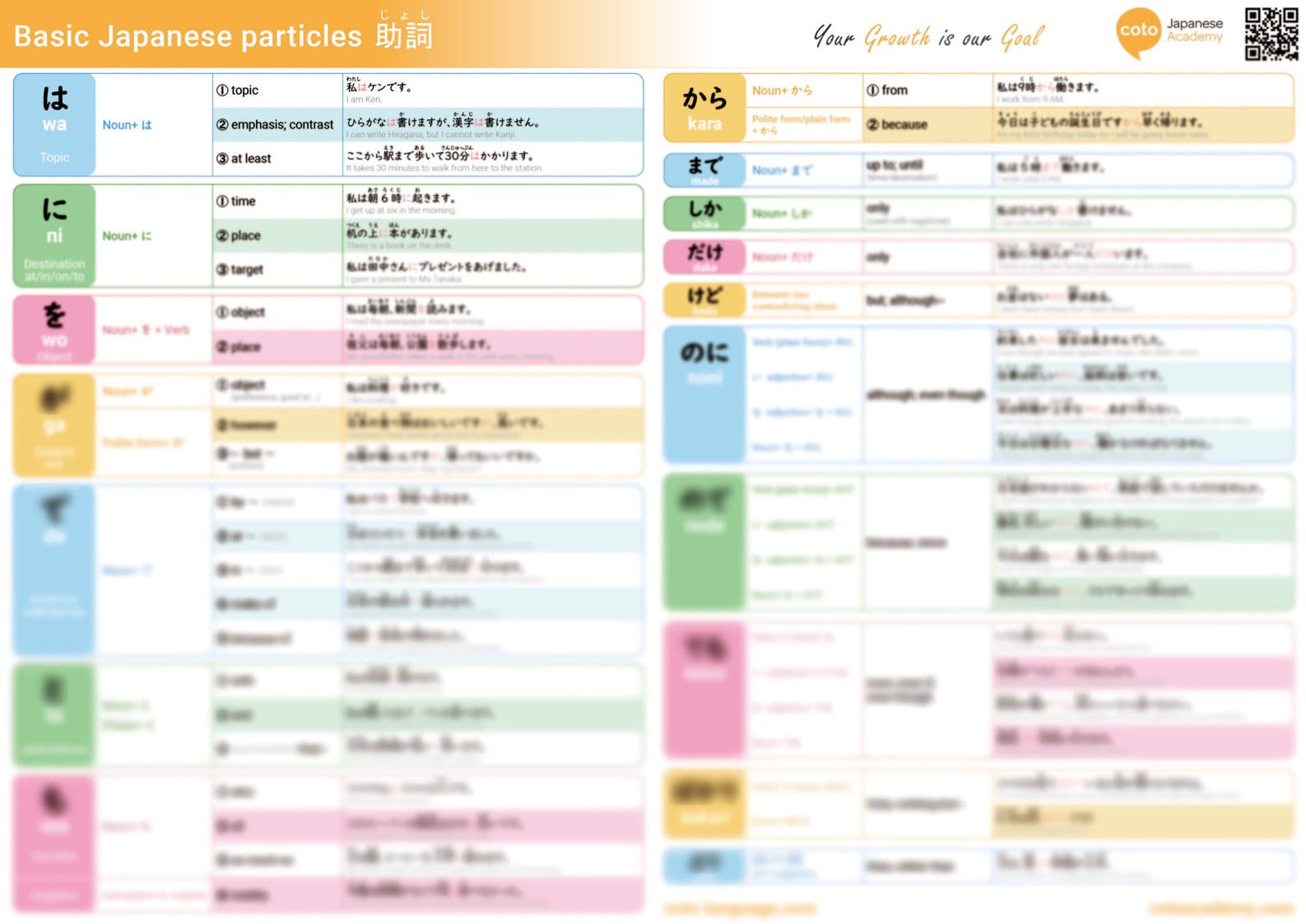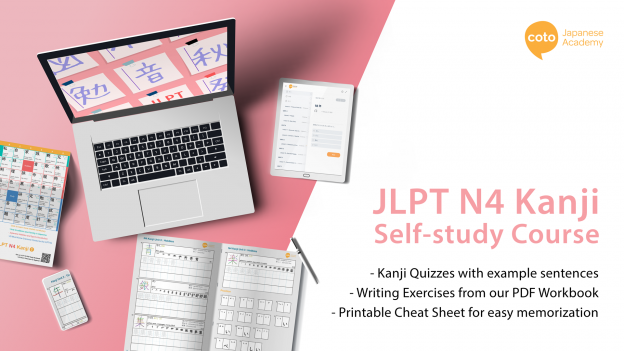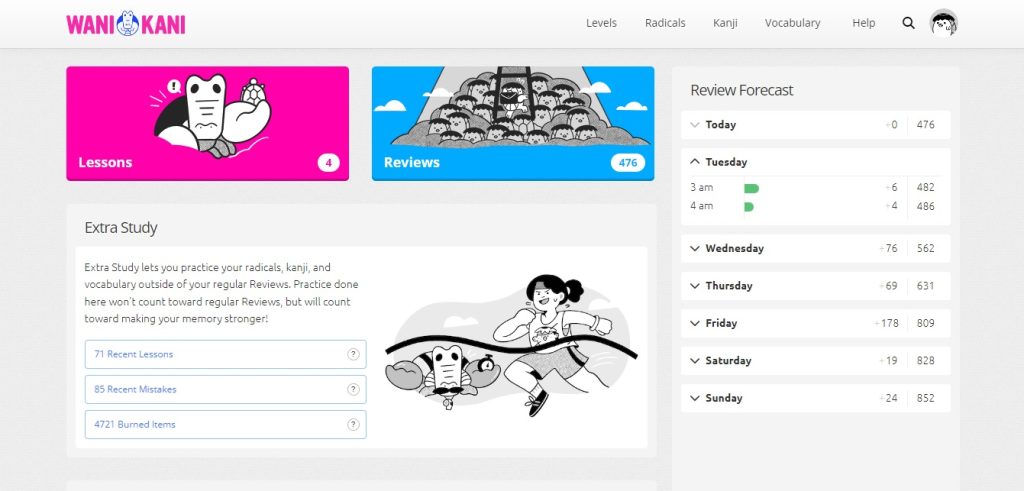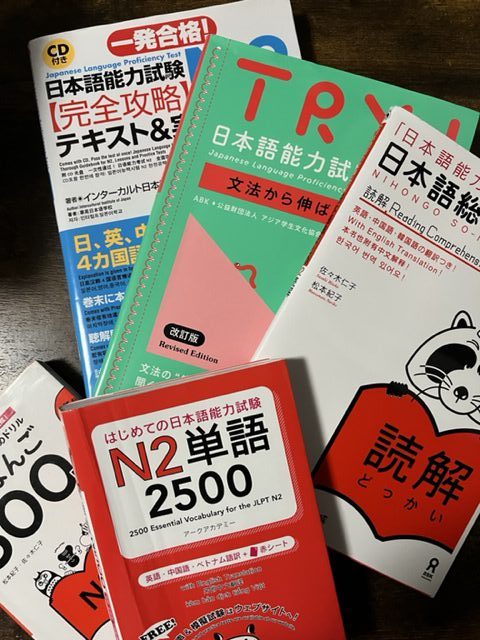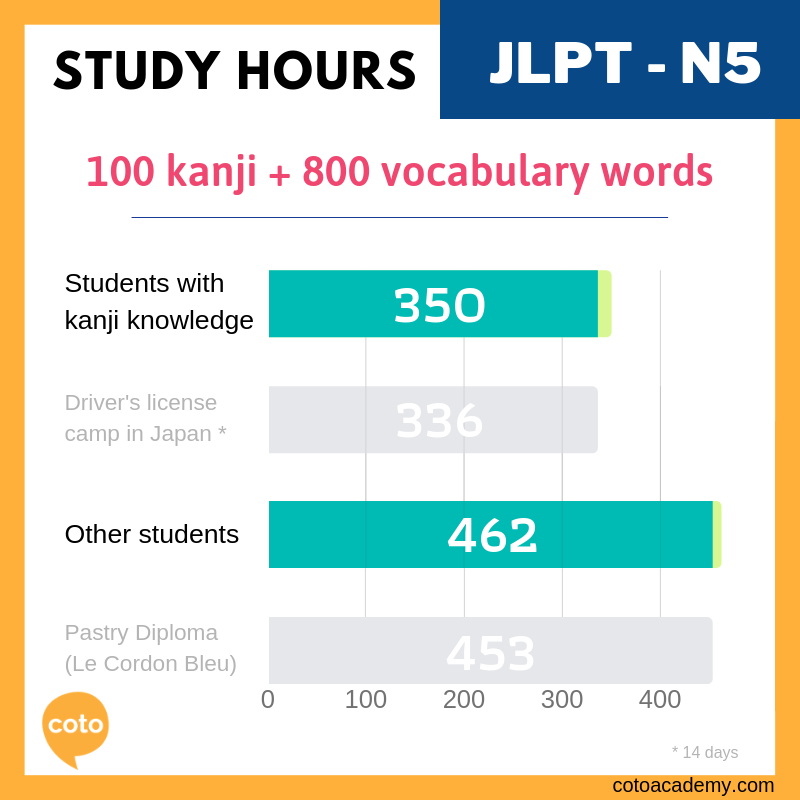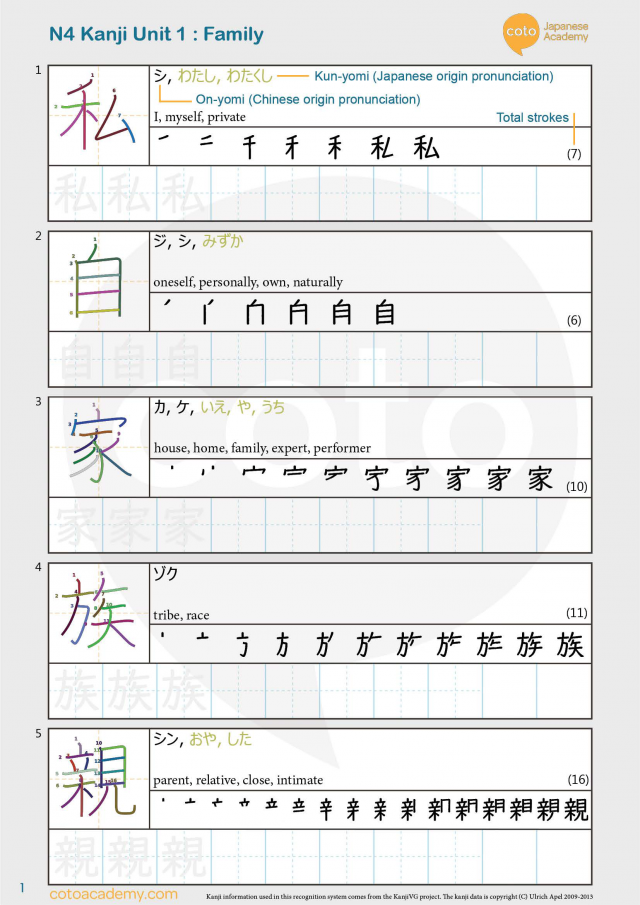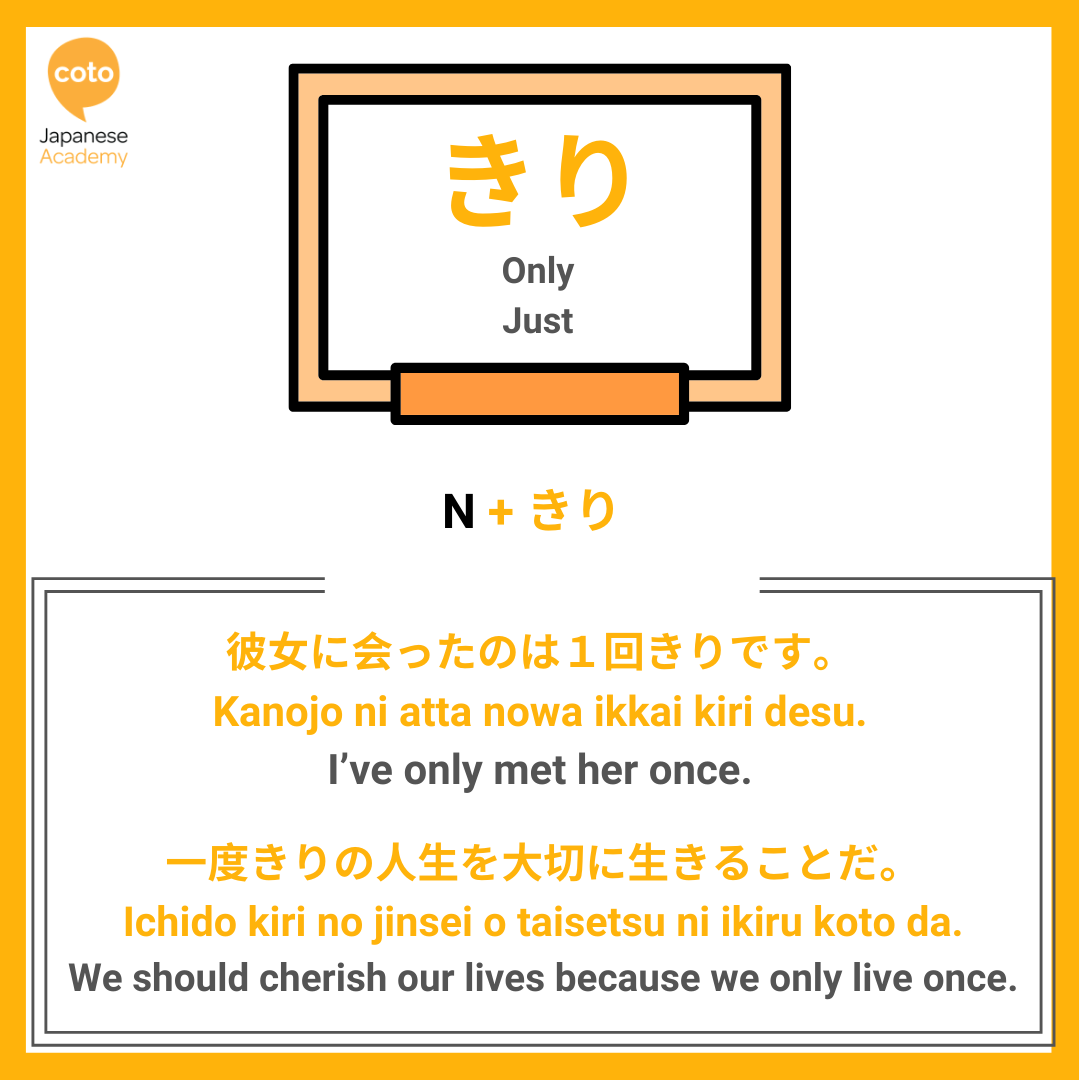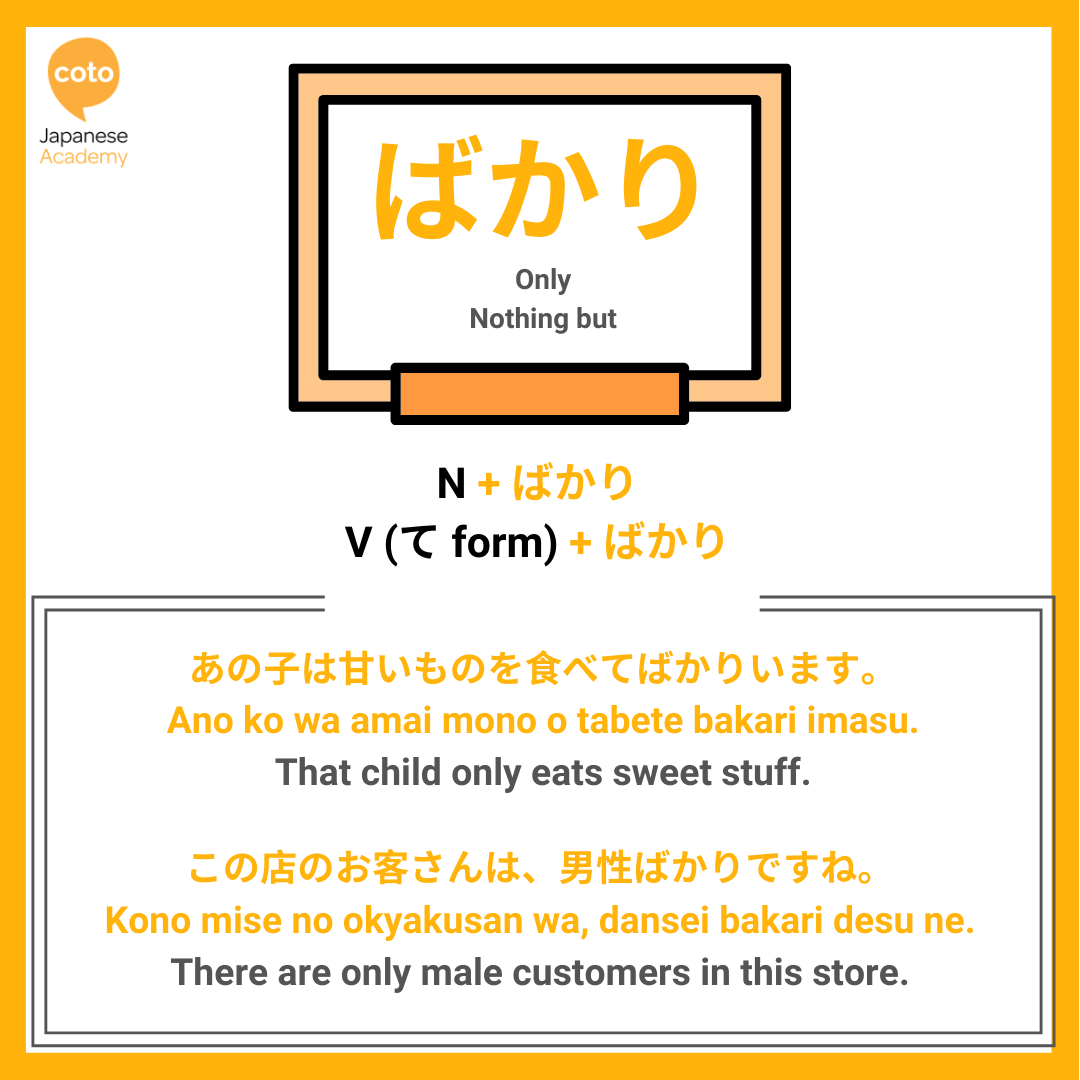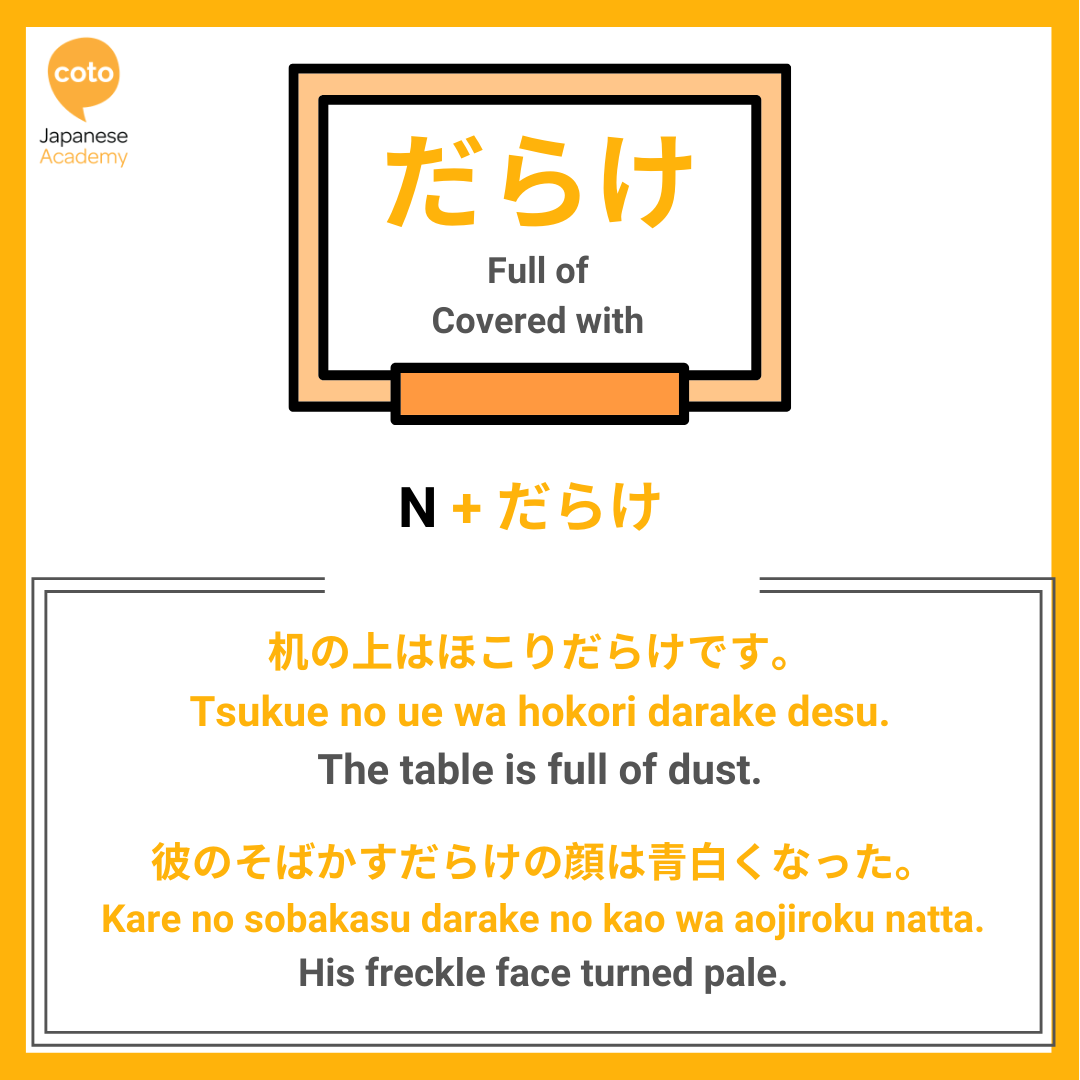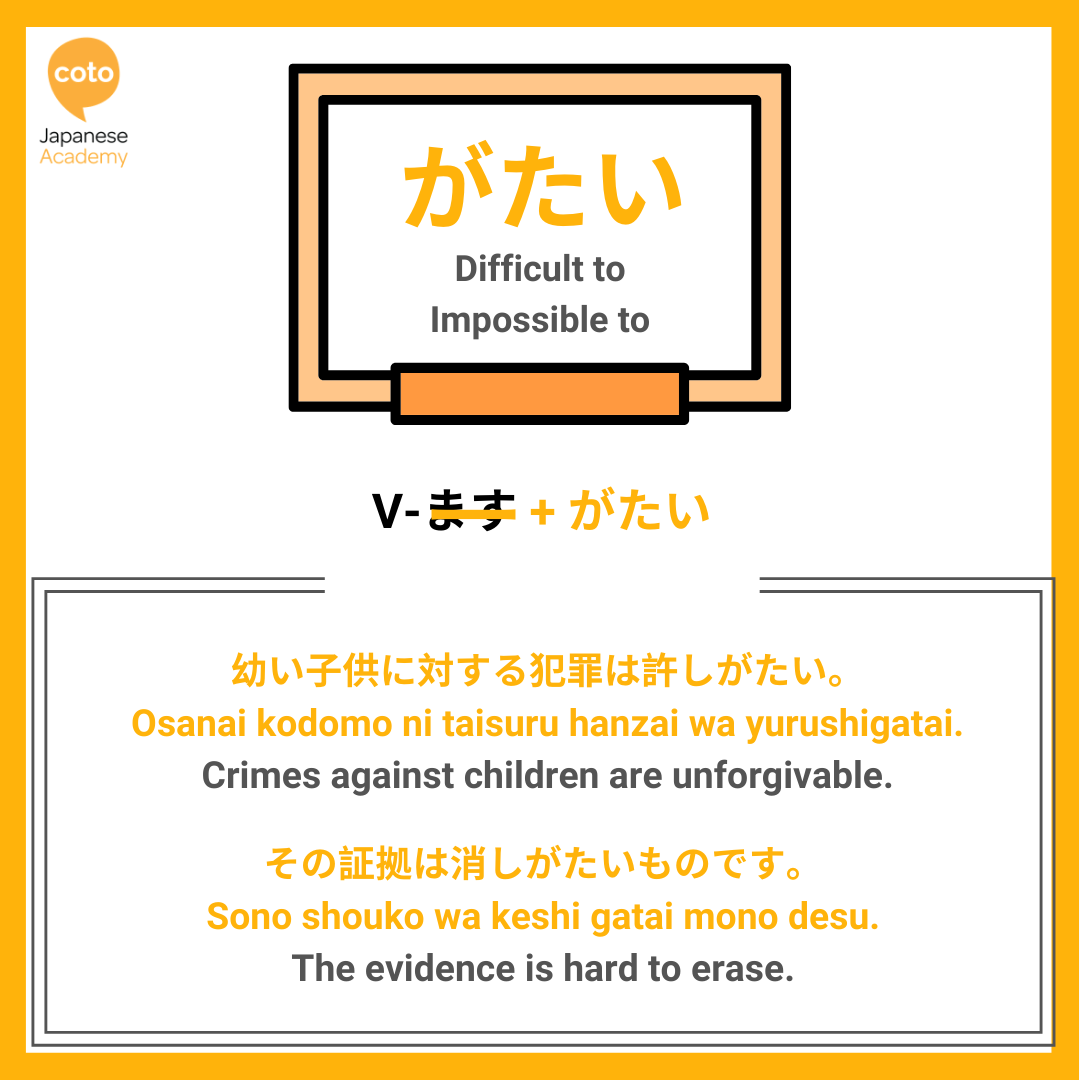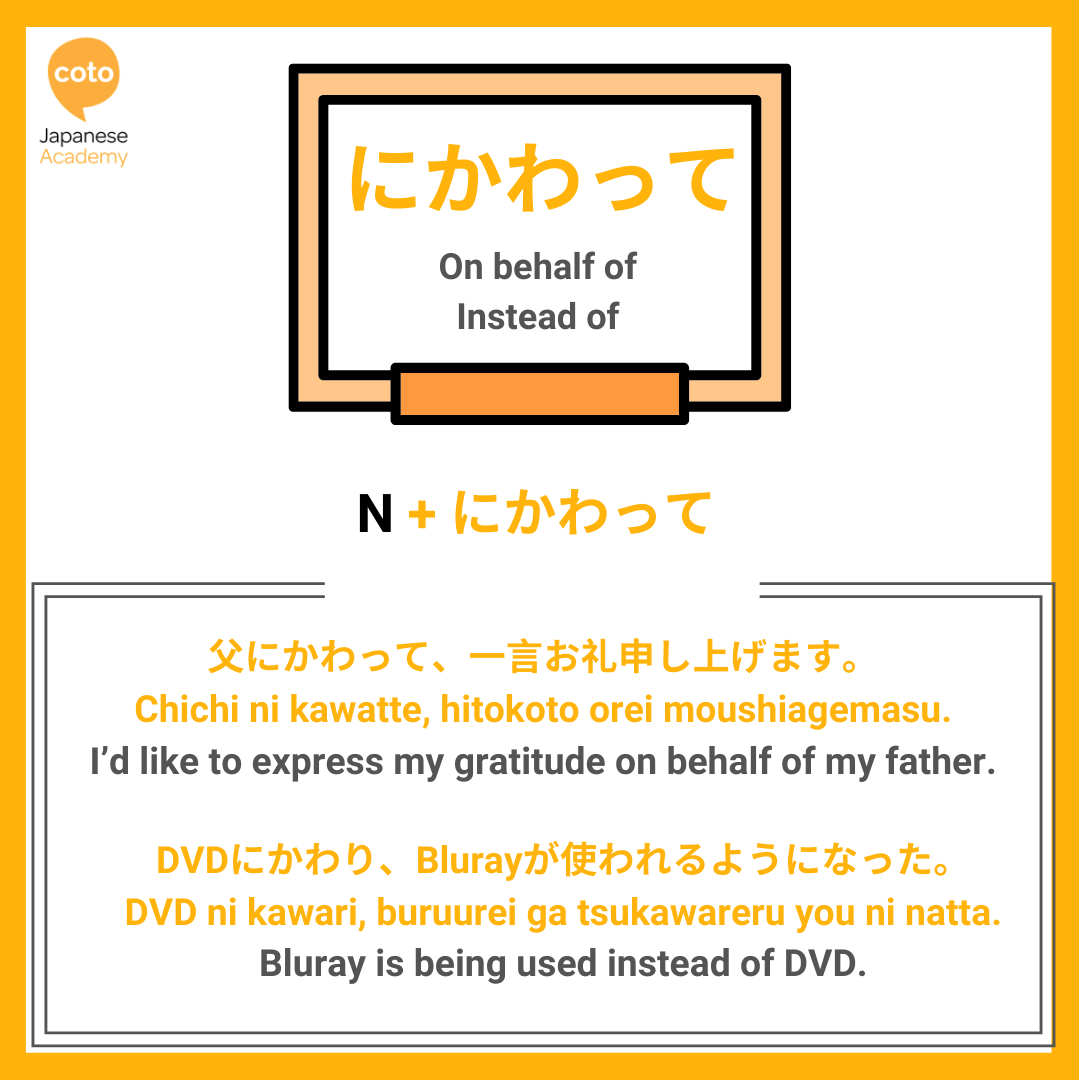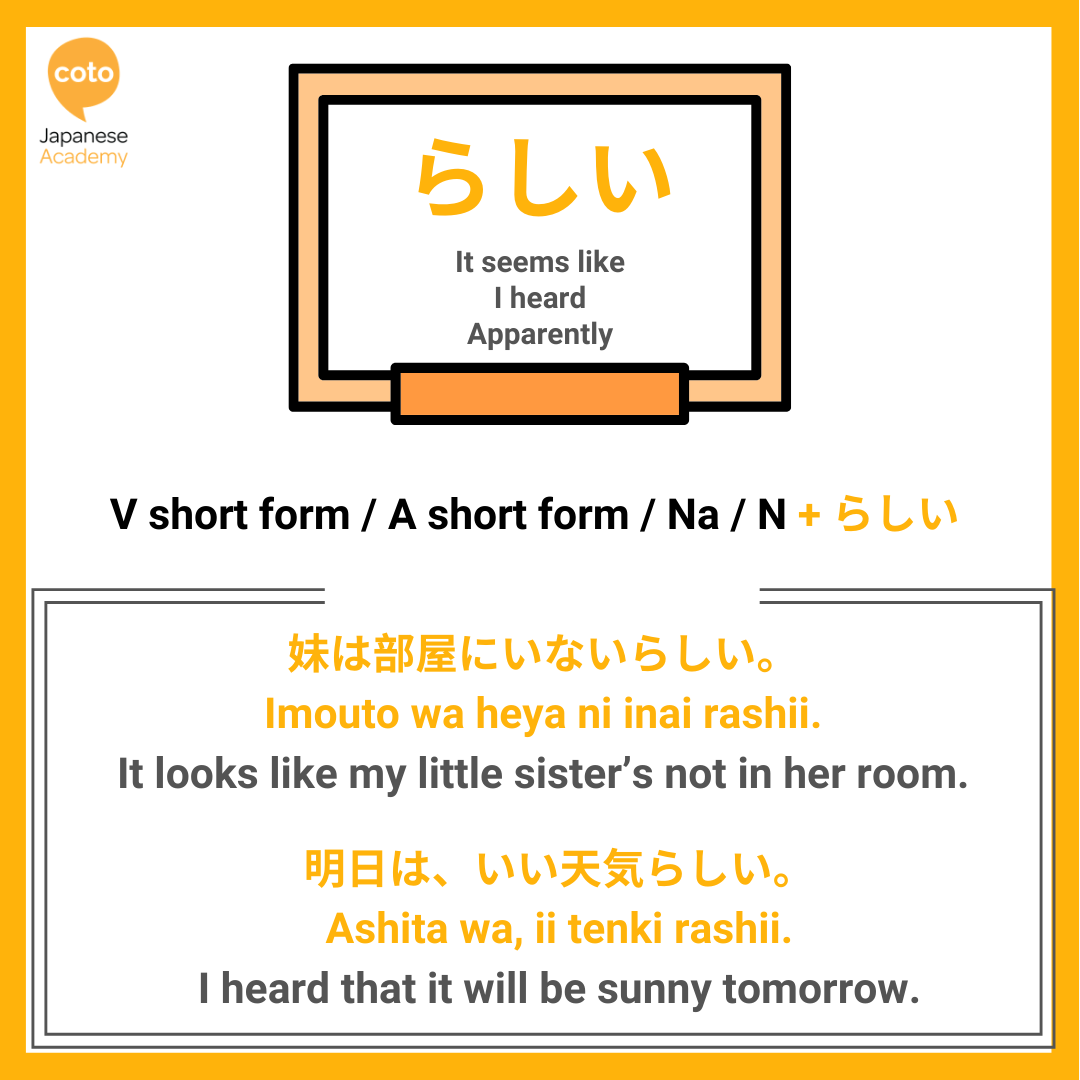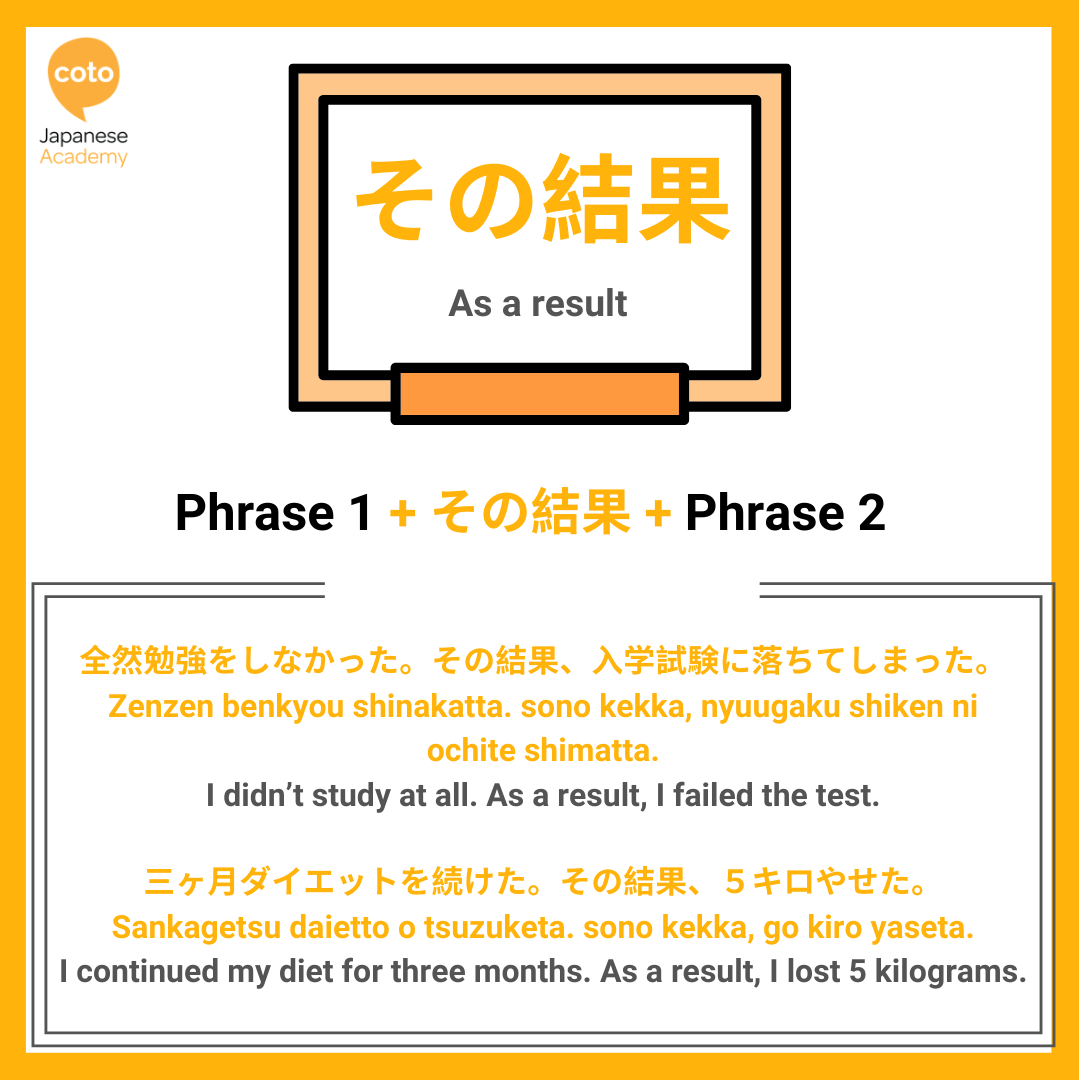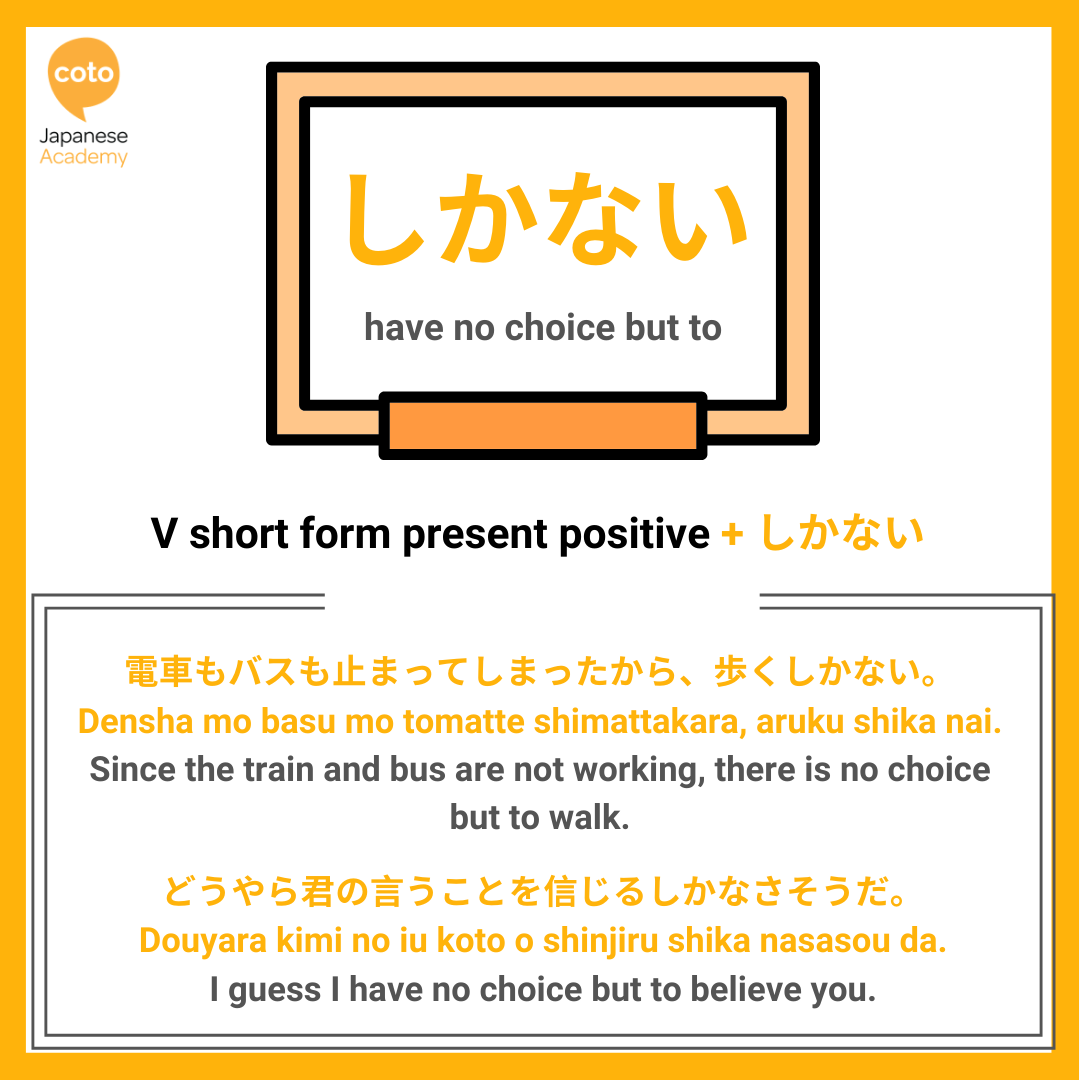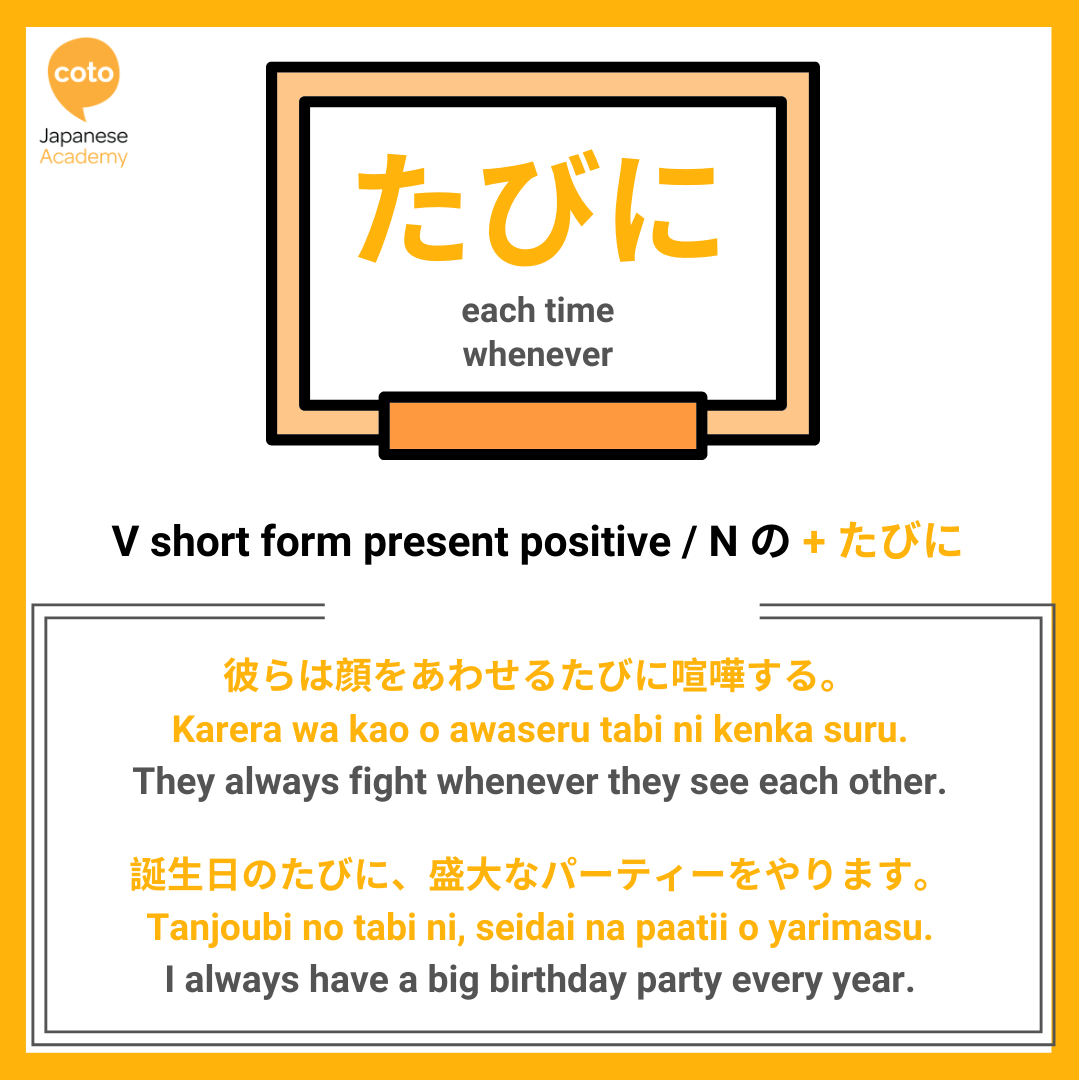Welcome to the ultimate guide to passing the JLPT N2 Exam!
The thought of taking JLPT is stressful, but what about preparing for them? With so many things to learn, it’s easy for anyone to feel completely disorganized.
Want to take your JLPT preparation to the next level? We have in-person and online JLPT courses taught by our experienced Japanese instructors to help you ace your next JLPT exam!
- In-person: JLPT Prep Course.
- Online: JLPT Prep Course
In this blog, we will cover everything you need to know about the JLPT N2 Exam (test contents, length, scoring methods, etc.), how to register, how to prepare, what happens on test day, and some resources and lessons we offer at Coto Academy to help you through your studies.
Keep scrolling if you are considering or planning to take the JLPT N2 Exam!
Check out our guides for other JLPT levels as well:
- Ultimate Guide to Passing the JLPT N1 Exam
- Ultimate Guide to Passing the JLPT N3 Exam
- Ultimate Guide to Passing the JLPT N4 Exam
- Ultimate Guide to Passing the JLPT N5 Exam
Table of Contents
1. About the JLPT
What is the JLPT?
Before we get started – what exactly is the JLPT? JLPT stands for Japanese-Language Proficiency Test, also known as 日本語能力試験. As the name suggests, the exam measures and certifies the Japanese proficiency of non-native Japanese speakers and is used by universities and employees inside and outside Japan. It is normally carried out twice a year in Japan and available in certain other countries. JLPT Exams are often taken by Japanese learners who are planning a future in Japan!
What are the different levels of the JLPT?
The JLPT is divided into five levels: N1, N2, N3, N4, and N5. N1 is the most advanced level, and N5 is the most basic.
- The N4 and N5 test you on basic Japanese that you can often learn in a classroom environment
- The N3 acts as a bridge between N4/N5 and N2/N1
- The N2 and N1 test you on a wider spectrum of Japanese knowledge used in various situations in everyday life
Who should take the JLPT? What are the advantages of taking the N2?
Your JLPT scores will be useful if you are looking for a job or planning to pursue education in Japan. JLPT certifications can also be advantageous when immigrating to Japan, as those who have passed the N2 and N1 qualify for preferential treatment.
Additionally, passing the JLPT N2 Exam can be a fitting goal for Japanese learners wanting to test their ability to understand Japanese used in everyday situations and in various circumstances to a certain degree.
2. About the JLPT N2 Exam
What does the N2 Exam test on?
The JLPT N2 Exam is an exam for upper-intermediate/advanced-level speakers. The JLPT N2 tests your ability to understand Japanese used in everyday situations and various circumstances to a certain degree. This includes having no difficulty in:
- Reading materials are written clearly on a variety of topics, such as articles and commentaries in newspapers and magazines, as well as simple critiques and comprehending their contents
- Reading written materials on general topics and following their narratives, as well as understanding the intent of the writers
- Comprehending orally presented materials such as coherent conversations and news reports, spoken at nearly natural speed in everyday situations as well as in a variety of settings, and following their ideas and comprehending their contents
- Understanding the relationships among the people involved and the essential points of the presented materials
How many sections are on the N2 Exam?
It is important to be aware of the structure of the exam to study for it efficiently. The JLPT N2 Exam consists of two main sections. Each section tests you on different aspects of the Japanese language.
| Section | Question types |
| 1. Language Knowledge(Vocabulary/Grammar) and Reading | – Kanji reading – Orthography – Word formation – Contextually-defined expressions – Paraphrases – Usage – Sentential grammar 1 (selecting grammar form) – Sentential grammar 2 (sentence composition) – Comprehension (short passages) – Comprehension (mid-size passages) – Integrated comprehension – Thematic comprehension (long passages) – Information retrieval |
| 2. Listening | – Task-based comprehension – Comprehension of key points – Comprehension of general outline – Verbal expressions – Quick response – Integrated comprehension |
What is and is not covered in the JLPT N2 Exam?
For the above three sections, you must master approximately 6000 vocabulary words and 1000 kanji. Although this may sound like a lot, you should already know around 3700 words and 650 kanji from N3-N5, so you are already halfway there! The vocabulary words and kanji covered in the N2 Exam include basic nouns and verbs from N4 and N5 and more complex terms necessary to understand difficult written materials such as newspapers, magazines, and simple critiques.
Furthermore, you must be familiar with grammar points such as particle usage, formal and casual conjugations of verbs and adjectives for past and present tenses, and sentence combinations. You must know around 200 more grammar points besides what you already know from the N3. Before taking the test, you should be comfortable reading and writing longer passages.
Because the JLPT Exam does not test on speaking, Japanese learners who are not comfortable speaking in Japanese can theoretically still pass, as long as they have mastered the vocabulary, kanji, and grammar covered on the N2 Exam. (However, you must keep in mind that Japanese speaking and conversational abilities are still necessary for life if you are seriously considering a future in Japan!)
How long is the N2 Exam?
You are given different amounts of time for each of the two different test sections.
| Section | Time |
| Language Knowledge (Vocabulary/Grammar) and Reading | 105 minutes |
| Listening | 50 minutes |
| Total Time | 155 minutes |
You are given 155 minutes to complete the JLPT N2 Exam.
What is the scoring for the JLPT N2 like?
Although the N2 Exam contains two sections, the scoring is divided into three.
| Section | Range of Scores |
| Language Knowledge (Vocabulary/Grammar) | 0 – 60 |
| Reading | 0 – 60 |
| Listening | 0 – 60 |
| Overall Score | 0 – 180 |
In total, your overall score can range from anywhere between 0 to 180.
For the N2 Exam, a passing score is anything above an overall score of 90 points. However, besides meeting the overall score of 95 points, you must also meet sectional pass marks of 19 points in the Language Knowledge (Vocabulary/Grammar) Section, Reading Section, and Listening Section. This means that even if your overall score is above 90 points if you do not meet the sectional pass marks for all three of the sections, you cannot pass. Thus, balancing your knowledge and avoiding relying on one section for points is important.
For how long should I study to pass the N2?
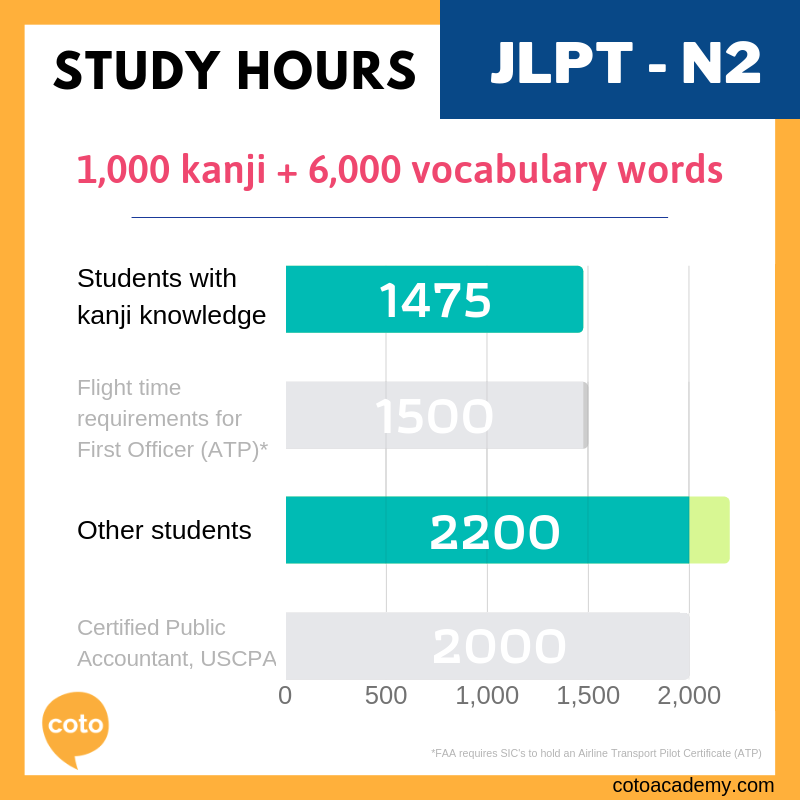
For students with kanji knowledge, 1475 hours of JLPT study is required. A restricted privileges ATP certificate allows a pilot to serve as a co-pilot until he or she obtains 1,500 hours. – So you can become the co-pilot of an aircraft for this number of hours.
For other students, it takes about 2200 hours. As a reference, credentials for a USCPA (Certified Public Accountant) take 2000 hours. Have fun crunching numbers!
For more information on necessary study hours for all levels of the JLPT, check out this blog article How Many Hours Does it Take to Pass the JLPT – Illustrated Guide.
3. How to Prepare
Mastering Kanji and Vocabulary
As previously mentioned, the JLPT N2 Exam covers around 1000 kanji. (Of course, you do not have to know all of them to pass, but it’s impossible to predict which ones will be on the exam.)
We highly recommend you check out our JLPT N2 Kanji Self-Study Course (¥1,000) to learn the necessary N2 kanji.
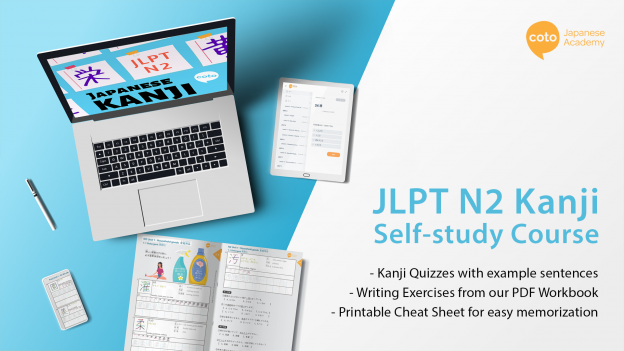
This self-study course covers N2 kanji and contains a quiz for each kanji, a downloadable pdf workbook, and a printable cheat sheet to help you through kanji memorization.
Click on the image to check it out!
Additionally, you can check out our JLPT N2 Kanji Writing Workbook (¥1,500).

This downloadable and printable E-book aims to help you practice writing N2-level kanji and memorize them efficiently.
We have also provided samples of the worksheets free of charge at the below links! These are very useful as they give you an idea of some kanji you will be tested on during the N2 exam. Click on the topic to download.
- Unit 1. JLPT N2 Kanji – Household Goods
- Unit 2. JLPT N2 Kanji – Body Parts
- Unit 3. JLPT N2 Kanji – Food Labels
- Unit 4. JLPT N2 Kanji – Recruitment and Jobs
- Unit 5. JLPT N2 Kanji – Signboards and Notice Boards
The best way to master the vocabulary for N2 is to memorize the words along with their kanji. This will also help you retain all the kanji, so the vocabulary and kanji study reinforce each other.
Mastering Grammar
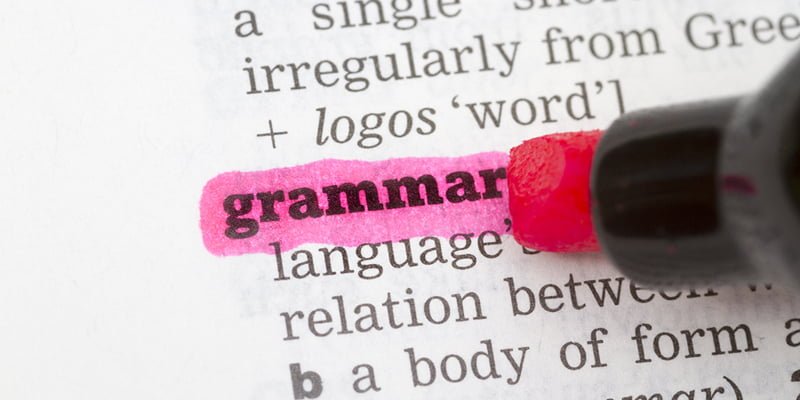
To learn grammar points covered on the N2 Exam, you can check out the below articles on basic Japanese grammar for free:
- Basic Sentence Patterns
- Particles (wa, ga, o, ni, de)
- Particles (no, to, mo, kara, made, ga)
- Verbs
- 20 Must-Know Grammar Points for the JLPT N2 Part 1
- 20 Must-Know Grammar Points for the JLPT N2 Part 2
In addition, our YouTube Channel is also great for learning important N2 grammar points, as well as improving your Japanese listening skills. We offer useful videos on phrases and grammar points commonly featured on the JLPT N2 and include familiar examples to help you get a grasp of how they are often used in daily life.
Here’s an example of our grammar videos:
If you are a person who learns better through videos and audio, check out our JLPT N2 Playlist, which has compiled all of the N2 grammar videos for you.
If you prefer to work with textbooks and worksheets, we recommend another self-study course! Our JLPT N2 Grammar Self-Study Course (¥1,000) is a grammar course that you complete all on your own.
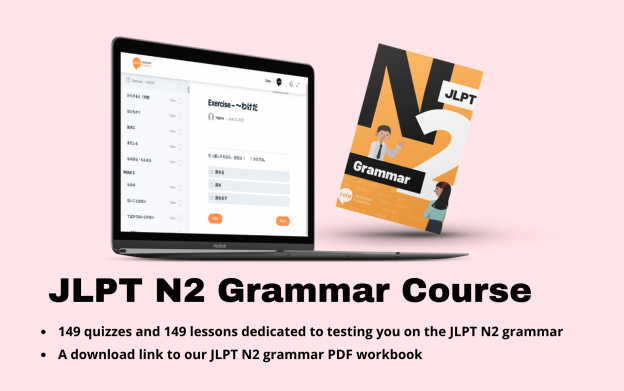
This course includes 149 lessons and 149 quizzes on grammar points that will be featured on the JLPT N2 Exam. You will also receive a link to download our JLPT N2 Grammar PDF Workbook upon purchase.
The JLPT N2 Grammar Workbook can also be purchased independently for ¥1,300.

This workbook includes 124 grammar points you need to pass the JLPT N3. Each grammar point has short explanations in English and in Japanese. The workbook includes practice exercises that you can do on your own!
Although self-studying is a great way to study at your own pace, textbooks, and worksheets may not perfectly prepare you for what’s to come on the JLPT Exam.
We recommend enrolling in offline or online courses at Coto to study for the N2.
4. Offline/Online Courses Offered at Coto
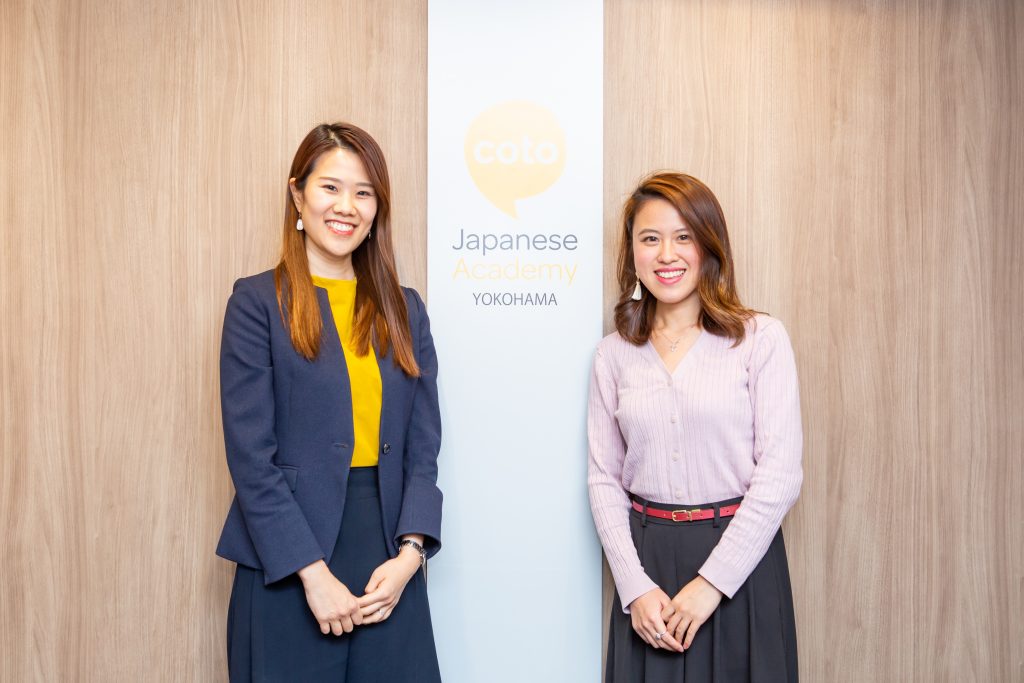
In addition to the resources mentioned above, Coto Academy offers offline and online classes to help you through your studies. (Offline classes are offered at our schools in Tokyo and Yokohama.)
Here is a list of lessons available at the JLPT N2 level. Click on your course of interest to find out more details about its contents, price, and schedule.
Coto Academy provides JLPT prep courses to help you ace your following JLPT exams; check the course information here and learn with us today!
Offline Courses (Tokyo/Yokohama)
- Intensive Courses
- Advanced Level 1-2 – an 8-week intensive course in a class of no more than 8 students, designed to train you to understand abstract Japanese content. You will also broaden your conversation to topics of interest and specialized fields and become able to express and defend your point of view. Classes take place every weekday, each lasting 3 hours.
- Advanced Level 3-4-5 – a 12-week advanced intensive course in which you will learn more abstract contents that will allow you to carry on and hold sophisticated conversations. By the end of this course, your grammar and vocabulary will become proficient enough that you will be able to speak in-depth and objectively with native Japanese speakers. This course also meets every weekday, each class lasting 3 hours.
- Part-time Lessons
- Natural and Fluent Japanese Communication 2 – the goal of this course is to acquire a broad spectrum of vocabulary and freely use it in numerous sentence patterns during conversations, so you’ll be able to speak about general things in Japanese only.
- Business Japanese – you will learn the etiquette and vernacular of doing business in Japan. The course will teach you basic formal expressions (basic keigo), setting-specific expressions on business situation in Japan.
- Japanese Explanation Training – designed for anyone who can communicate using only Japanese but feels they have problems with detailed explanations. The course will improve your ability to speak about familiar topics in-depth.
- Keigo Training – designed to hone your Keigo Japanese to improve your Japanese language in a professional setting.
- Private Lessons – matched to our students’ Japanese study experience, comprehension, and needs 1-1 with a professional teacher. Instead of in small groups, you will meet privately with a professional instructor in-person and receive a lesson plan strictly designed to fit your needs and studying habits. Perfect for those wanting flexible scheduling to tackle their weaknesses in the language proactively.
- JLPT Prep Courses – designed to prepare you for everything you will encounter on the JLPT, in small groups of no more than 8 students. With in-house materials and interactive classroom environment, you will work towards N2 certification alongside your peers.
Online Courses
- Private Lessons – matched to our students’ Japanese study experience, comprehension, and needs 1-1 with a professional teacher online. Instead of in small groups, you will meet privately with a professional instructor online via Zoom and receive a lesson plan strictly designed to fit your needs and studying habits. Perfect for those wanting flexible scheduling to tackle their weaknesses in the language proactively.
- Group Lessons
- Business Lite Intensive – designed to teach Japanese that is common in the workplace to prepare you for a job in Japan. A group of more than 8 students.
- Business Japanese – dedicated to cover basic formal expressions (basic keigo) and setting-specific expressions in Japanese business scenes.
- Natural and Fluent Japanese 2 – a grammar-focused course encouraging students to acquire a broad spectrum of vocabulary and freely use it in numerous sentence patterns during conversations.
- Japanese Explanation Training – designed for anyone who can communicate using only Japanese, but feel they have problems with detailed explanations. The course will improve your ability to speak about familiar topics in-depth.
- Read and Discuss Current Events – focused on improving the students’ ability to naturally talk about recent news and important topics in Japanese. You will read articles that are in current discussion in Japanese news and actively discuss over topics ranging from politics to environment to economics. Because the N2 includes many newspaper articles and critiques in its reading comprehension section, this course is recommended.
- Advanced Japanese Explanation Training – designed to help each student develop the ability to explain topics using correct Japanese grammar. This course is conversational. You will learn how to talk about a variety of topics – hobbies, experiences, dream house, job, etc. – and strengthen the ability to proactively think in Japanese.
- JLPT N2 Grammar – a year-long course that will prepare you for the JLPT N2 Exam. You will read passages common to the JLPT N2 Exam and learn how to use most of the grammar points covered on the N2.
- JLPT N2 Reading – a 6 month course focusing on the key points of reading comprehension necessary for the JLPT N2 exam.
- JLPT N2 Online Prep Lecture – designed for students wanting to study individually with the lesson material while listening to the lecture on the screen. It is an affordable and convenient option for those who are looking for a high-quality seminar-style classroom taught by a professional native. In this lecture, we utilize our in-house exercises and study materials specialized for JLPT preparation. You will be assigned materials each week on Google Classroom.
To sign up for and enroll in classes, visit this page and you will be directed to schedule a free interview!
5. Join our JLPT Prep Courses

For effective studying for the JLPT N2, we highly recommend our JLPT N2 Prep Course! This Japanese language course is available both online and offline and will prepare you to take and successfully pass the JLPT N2 with a mix of in-house materials and hand-selected materials trusted by our instructors. The course will strengthen your vocabulary, kanji, grammar, reading comprehension, and listening skills required to successfully obtain a N2 certification. By taking the JLPT N2 Prep Course, pass the exam and open more opportunities for your life in Japan!
For more information on JLPT Prep Courses, click here.
6. How to Register
Next Test Date: December 1st 2024
Application Period: Until September 12 (Thu), 17:00
Application Method: You must apply from the MyJLPT “JLPT Application” screen after registering with MyJLPT on the JLPT website of Japan Educational Exchanges and Services (JESS).
Test Fee: 7,500 yen (consumption tax included)
Payment Methods: Credit card, bank wire transfer (pay-easy), payment at a convenience store
Once registered, you will receive a test voucher around mid-November, indicating your test location and more details about the JLPT Exam.
For more information, visit the JLPT Official Website.
7. What Happens on Test Day
It’s your big test day!
Before heading out to your test center, make sure to bring your test voucher, writing utensils (mechanical pencils are accepted), and maybe some snacks and a watch to help you with time-management.
For examinees in Japan, your test will begin at 12:30, but the test center will be already open from 11:45. We recommend you to head out early to be safe.
Once you arrive at your test venue, you will be asked to show your test voucher to the staff. Examinees are split into different rooms based on their voucher numbers. You will be instructed to enter one of these rooms.
Once you have found and entered your room, you will find the desk that has your number on it. You will receive instructions from staff and begin your exam when it’s time.
The whole exam will take several hours to complete (in the case of the N2 Exam, 155 minutes) and you will get short breaks between each section. When the exam is finished, you will need to wait until all test papers have been collected before you can leave the room.
*Processes at overseas testing sites may differ.
You’ve reached the end of the ultimate guide to passing the JLPT N2 Exam. We hope this was helpful and wish you good luck on your studies!

